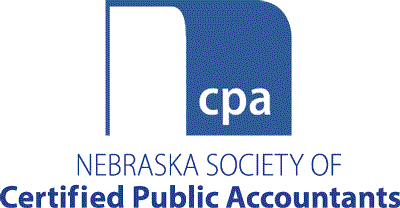Generally Accepted Accounting Principles (GAAP) is the language of financial reporting that readers of financial statements rely on for clear communication of an entity’s financial position and changes therein. Although GAAP includes many terms commonly used in the English language, GAAP also uses many critical terms specifically defined in GAAP literature. This report focuses on some of those critical terms that financial statement preparers and auditors need to understand to properly serve the public interest. Essentially, GAAP financial statements should use GAAP language: FASB GAAP for non-governments and GASB GAAP for state and local governments. We will emphasize FASB GAAP.
What’s an Asset?
We’ve all probably heard entities claim that “our people are our most important asset.” OK, but people are not reported as assets in GAAP financial statements. Additionally, Warren Buffett, chairman and CEO of Berkshire Hathaway, wrote the following in his February 2023 annual letter to the conglomerate’s shareholders:
“Though not recognized in our financial statements, this float* has been an extraordinary asset for Berkshire.”
*Float can be thought of as money available for use by an insurance company during the period between receipt of policyholder premiums and payment of policyholder claims.
Apparently, in this written assertion, Buffett is using a non-GAAP definition of an “asset” (or the implication would be that Berkshire’s financial statements contain a material GAAP departure).
So, what is the GAAP definition of an asset? FASB Statement of Financial Accounting Concepts (SFAC) No. 8, Chapter 4, Elements of Financial Statements, paragraph E16 states: “An asset is a present right of an entity to an economic benefit.” Chapter 4 goes on to elaborate many things about this definition, including that it means the “right” exists at the financial statement date and, therefore, has arisen from past transactions or other past events or circumstances (paragraph E28). In business entities, “economic benefits” generally result in potential net cash inflows. In not-for-profit (NFP) entities, “economic benefits” are used to provide desired or needed goods or services to beneficiaries or other constituents (paragraph E19).
Please note that while Concepts Statements are not considered part of authoritative GAAP, they are still part of GAAP, and per paragraph E2 of SFAC No. 8, Chapter 4, “definitions of elements of financial statements are a significant determinant of the content of financial statements.” Why would any preparer or auditor not want to use them? As a reminder, FASB Concepts Statements apply to both business entities and not-for-profit entities (non-governments), and are a component of non-authoritative GAAP for state and local governments (GASB Statement No. 76, paragraph 7.) However, GASB Concepts Statement No. 4 defines the term “assets” for state and local governments as “resources with present service capacity that the government presently controls.” Authoritative FASB GAAP definitions can be found in the master glossary (as well as the “20” sections) of the FASB Accounting Standards Codification (ASC). The term “asset” appears not to be among them.
An example of an item that would meet this FASB definition of an asset is an NFP’s irrevocable beneficial interest in donated assets held by a third party, even if the third party had variance power that was unexercised at the financial statement date. In fact, an NFP with which I am familiar asserted this recognition was needed for fair presentation of their financial statements. I agree.
And, think about this: How can an auditor obtain sufficient appropriate audit evidence about the completeness assertion for assets presented on their client’s financial statements without knowing the GAAP definition of an asset?
What’s a Liability?
A liability is a present obligation of an entity to transfer an economic benefit, per SFAC No. 8, Chapter 4, paragraph E37. A present obligation must exist at the financial statement date (paragraph E45). An obligation is any condition that binds an entity to some performance or action (paragraph E41). While most obligations are legally enforceable, including those arising from contracts, agreements (written or oral; paragraph E40), rules, and statutes, some liabilities rest on constructive obligations, such as through customary business practice (paragraphs E49 & E50). For example, constructive obligations may arise from an entity’s historical policies and practices for sales returns as well as the absence of written warranties in business entities. On the other hand, donor-imposed restrictions on an NFP’s use of contributed assets do not create obligations that qualify as liabilities (paragraph E53).
Please note that the GASB defines a liability as a present obligation to sacrifice resources that the government has little or no discretion to avoid.
Revenues, Expenses, Gains & Losses
Revenues and expenses result from delivering or producing goods, rendering services, or carrying out other activities.* Other activities include, for example, interest, rent, royalties, fees, and charitable contributions received and made (paragraph E84). Gains/losses are increases/decreases in equity except those that result from revenues/expenses (paragraphs E82 & E83).
*The FASB ASC Glossary at 610-20-20 adds the words “ongoing, major, or central operations.”
A term that still appears in some NFP financial statements is “support.” This term was defined long ago (June 1993) in FASB Statements 116 on Contributions and 117 on NFP Financial Statements as referring to contributions. However, neither the FASB ASC nor SFAC No. 8, Chapter 4 appears to define the term “support.” Thus, this term is apparently previous GAAP, and should probably not be used, especially when no contributions are received during the reporting period.
Events, Transactions & Circumstances
An event is a happening of consequence to an entity (internal or external). A transaction is a particular kind of external event; namely, it involves a transfer of something of value between two or more entities, either in an exchange or a nonreciprocal transfer. Circumstances are a condition or set of conditions that develop from an event or series of events. (SFAC No. 8, Chapter 4)
Based on these GAAP definitions the term “transaction” is clearly a conceptual subset of the term “event.” Therefore, the phrase “transactions and events” would be inappropriate in a subsequent events footnote (it would be like referring to “cars and vehicles”). Reporting entity management could simply refer to “transactions and other events,” or better yet just “events.”
Accruals & Deferrals
Accrual accounting records the financial effects of events, transactions, and circumstances in the periods in which those items occur (SFAC No. 8, Chapter 4). This is not new! Nonetheless, numerous GAAP financial statements still contain footnotes stating: “The entity follows accrual accounting. Under accrual accounting, revenues are recognized when earned, and expenses when a liability has been incurred.” Proper use of GAAP terminology would require replacing “earned” with “occurred,” and “liability” with “cost.”
Accrual is the accounting process of recognizing assets or liabilities and the related changes in revenues, expenses, gains, losses, or equity for amounts expected to be received or paid, usually in cash, in the future. In other words, transaction occurrence precedes the related cash flow. For example, if a lawn service mows my lawn with the understanding I will pay them later, I have an accrued liability.
Deferral, on the other hand, is concerned with past cash receipts and payments. Deferral is the accounting process of recognizing a liability resulting from a current receipt of cash or other asset, with deferred recognition of related revenues, expenses, gains, or losses. In other words, cash flow precedes related transaction occurrence (SFAC No. 8, Chapter 4). So, if I were to pay the lawn service to mow my lawn before they do it, then I would have a deferred charge on my balance sheet, probably reported as a prepaid expense. However, please be aware that GASB Concepts Statement (SGAC) No. 4 and GASB Statements 63 & 65 prohibit state and local governments from presenting deferrals as liabilities or assets; they are to be presented separately as “deferred inflows of resources” or “deferred outflows of resources,” respectively.
Accrual/Deferral GAAP Departures to Avoid
- When a reporting entity enters into a contract to sell goods or services to a customer, but the contract is wholly unperformed as of the financial statement date, neither party has an accounting entry to make generally. The seller has no asset yet, due to the absence of either performance or a cash receipt. The customer likewise has no asset or liability in the absence of their prepayment or seller performance. I have seen numerous real-life instances where entities have reported both assets and liabilities before any cash flows or performance have occurred, thereby overstating their GAAP balance sheets. (See FASB ASU 2014-09 Revenue from Contracts with Customers – Topic 606, paragraph BC 50.)
- When a seller bills a customer in advance of providing goods or services, no receivable is appropriate since no transaction has occurred (a billing is simply a demand for payment). Likewise, no deferred revenue liability is appropriate if no cash is received from the customer. The risk of this type of GAAP departure occurring increases if the entity’s billing system is integrated with their general ledger. I’ve seen this happen, too.
- My largest first-year NFP audit client presented their G/L to me that included a balance sheet account in the millions of dollars (cannot remember if it was a debit or a credit) entitled “accrued deferrals.” When I inquired as to the nature of this account and its substantial balance, I got no answer. This turned out to be one of several material prior-period adjustments I proposed, and the client made.
Selected Other Terms
- “Pledges receivable.” I often see this term used by reporting entity management in their GAAP NFP financial statements. The word “pledge” is, of course, an English word with various meanings, such as:
- The Pledge of Allegiance
- A brand name of furniture polish
But it is not a GAAP word. Neither the FASB ASC nor any FASB Concepts Statements I have found define it. In fact, the June 1993 Original FASB Statement No. 116 on Contributions says in paragraph 89: “This statement avoids the use of the term ‘pledge’ because it may be misinterpreted.”
Current authoritative GAAP (FASB ASC 958-310-25-1 and the Glossaries) define the terms “contributions receivable” and “promises receivable—two terms that are essentially interchangeable. Use those, not “pledge.”
A contribution is defined in FASB ASU 958-310-20 as “a transfer of cash or other assets to an entity or a settlement or cancellation of its liabilities in a voluntary nonreciprocal transfer by another entity acting other than as an owner.” A promise-to-give is a type of contribution. So remember, a contribution (received or made) can occur under GAAP even in the absence of a transfer of resources. Also, in GAAP, the words “contribution,” “gift,” and “donation” are synonymous substance terms and should not be confused with transaction forms such as “grant” or “award.” Accounting and financial reporting are based on transaction substance, not form!
- “Earn” or “earnings.” This term is not formally defined or discussed in SFAC No. 8, as it was previously in the now superseded SFAC No. 6, which associated that term with the excess of revenue over related expenses in exchange transactions, which conceptually involve a matching concept.
More importantly, this term is neither defined nor used in the text of FASB ASU 2014-09, Revenue from Contracts with Customers. Exchange transaction revenues under GAAP are to be recognized upon satisfaction of performance obligations (not “earnings”).
Conclusion
Financial statement preparers and auditors should become thoroughly familiar with the GAAP terms defined not only in authoritative GAAP pronouncements, but also in Concepts Statements as well. After all, these principles (GAAP) are represented by reporting entity management to have been followed, and auditors use them as criteria in their audits of GAAP financial statements. Any imprecision in the use of key terms can result in confusion and inconsistencies in both financial statement preparation and auditing, thereby failing to serve the public interest.
So, if you see or hear someone declare that, “for most people, their home is their biggest ‘investment,’” you perhaps may be prompted to think, “OK, fine … but that ain’t GAAP!”
Paul H. Koehler, CPA, is a sole practitioner in Lincoln, Neb. He has more than 45 years of experience in auditing, training, and consulting, specializing in nonprofit organizations and state and local governments. You may contact him at (402) 488-1578.









